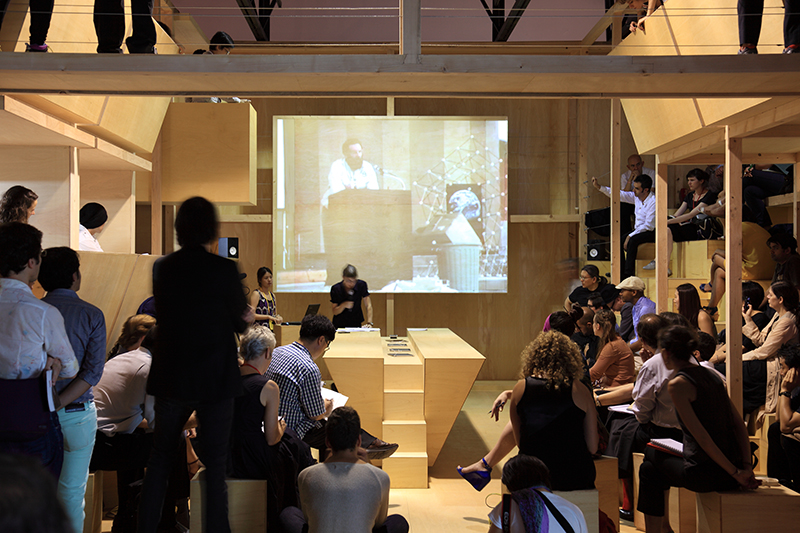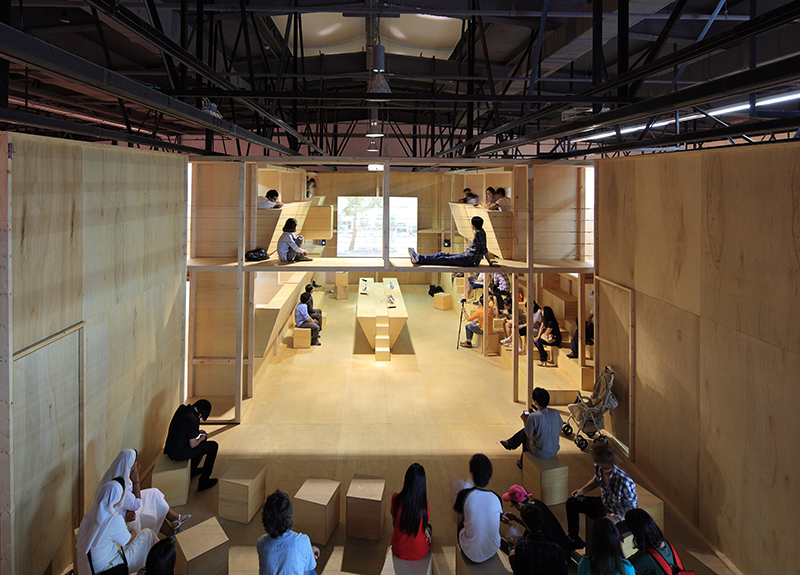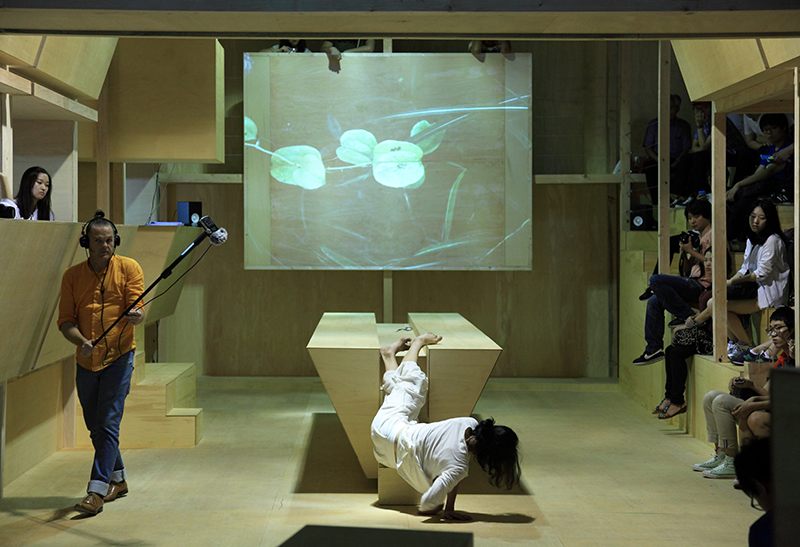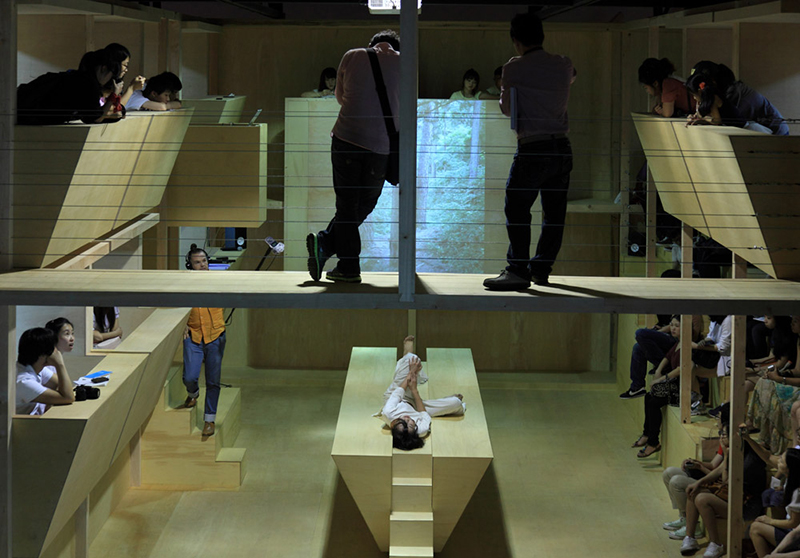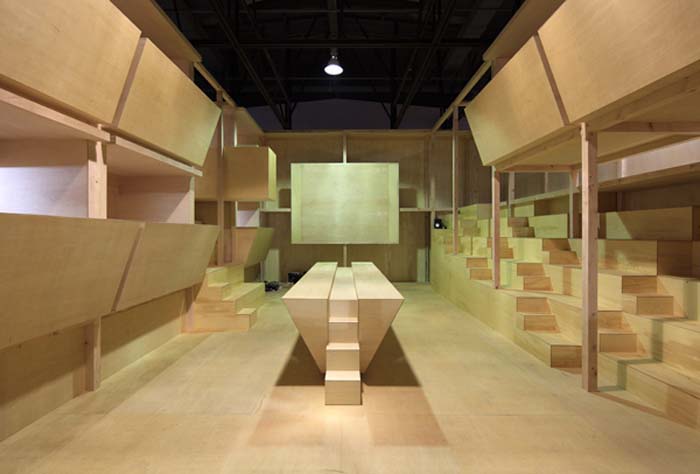Gwangju Biennale Hub
On-Site
2011
Gwangju, KR
Commissioned by Beatrice Galilee, Curator Communities Section
- A project by nOffice (Miessen Pflugfelder Nilsson)
- Photography by: JongOh Kim
The ‘On-Site’ Hub at the Gwangju Biennale was a bastard typology merging parliamentary, sacral and theatrical layouts into a productive, discursive and social stage. Through the merging of different typological forms and formats a certain density of use was generated that yielded a sense of programmatic friction. Encounters within this spatial framework were never pure and straightforward, but to a certain extent also convoluted and potentially conflictual. The Hub was the centre of the Communities Section within the Gwangju Biennale.
The 4th Gwangju Design Biennale hosted by Gwangju Metropolitan City (Mayor Untae Kang) and Gwangju Biennale Foundation (President Yongwoo Lee), and co-directed by Korean architect Seung H-sang and Chinese artist Ai Weiwei, held its closing ceremony on October 23rd with a record attendance of around 896,502 visitors. The huge success of the Biennale reflects the heated atmosphere of Gwangju city, home to both contemporary art and design biennales, and confirms the art world’s enthusiastic reception of the city that is pioneering the global design biennale.
With the theme “Design is Design is Not Design,” the 2011 Gwangju Design Biennale featured six main exhibitions: Urban Follies, Unnamed Design, Named Design, Community, Biennale City, and the Academy. Inspired by the first lines of the ancient Chinese philosopher Lao-tzu’s Tao Te Ching, the Biennale’s exploration of the politics of commercialization and commodification of the design industry caused a great sensation. In particular, the Gwangju Design Biennale invited ten world-renowned architects, including Peter Eisenman, to participate in the inaugural Gwangju Folly project, which constructed permanent public architectural installations across the city of Gwangju. The Gwangju Biennale Foundation plans to continue this project in subsequent years.
As co-artistic directors Ai Weiwei and Seung H-sang were preparing for the Biennale, Ai Weiwei was suddenly detained by his home government for 81 days. A global outcry of artists, practitioners and institutions responded to Ai’s unexpected detention with an extensive movement demanding his release. Along with over 30 art institutions around the world, including New York’s Guggenheim Museum and the Museum of Modern Art (MOMA), London’s Tate Modern, the Centre Pompidou in France, and the Los Angeles County Museum (LACMA), the Gwangju Design Biennale actively petitioned for Ai’s release. The Gwangju Design Biennale is grateful to all the institutions that participated in the movement for Ai’s release.
The Unnamed Design exhibition co-curated by Ai Weiwei and Brendan McGetrick presented a thought-provoking challenge to traditional notions of design, introducing new cultural, political, and aesthetic concepts and practices. As Alice Rawsthorn wrote in the New York Times: “The show argues that design is not solely the preserve of professional designers but can also be the work of scientists, activists, computer programmers, hackers and anyone else who applies ingenuity, originality, strategic thinking and other qualities that are indispensable to good design.”
